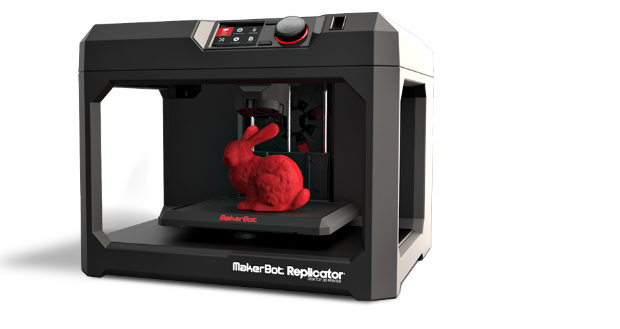MakerBot’s Replicator desktop 3D printer has joined the likes of apple’s iPhone and BMW’s i8, receiving the Red Dot Award for product design.
Ricoh distributes the Makerbot printers in New Zealand and the company says the fifth generation Replicator provides the easiest and most versatile way to get from 3D model to 3D print.
An international jury selected the The MakerBot Replicator Desktop 3D printer nearly 5,000 entries. The jury says, “This 3D printer features an inspiring, open design. Its clean aesthetics blend perfectly into professional and educational environments, as well as the home.”
Mark Palmer, director of industrial design at MakerBot, says, “To date, nobody has applied real design to 3D printers. Many companies focus simply on the mechanical and electrical components, and neglect the design considerations that build an emotional connection with the printer and a seamless user experience. The MakerBot Replicator, with its design recognition, stands out from other printers as being more than just a collection of components.”
MakerBot says its industrial designers Jackson Seidenberg and Vishnu Anantha and the engineering and product teams who they collaborate with feel honoured to receive the award. Yuri Salnikoff, chief marketing officer of MakerBot, says, “We wanted to create a desktop 3D printer that was friendly, accessible and invites individuals to engage and quickly turn an idea into a physical object. The MakerBot Replicator provides direct access in the work area and empowers educators, designer and engineers to unleash their creativity.”
The MakerBot Replicator features a 3.5” display for functions, print status, and advanced features, and a rotary knob as the selector. The printer receives back up from the company’s desktop software for preparing prints; a Mobile app with cloud platform to initiate and monitor prints remotely; what it calls MakerBot Thingiverse, the world’s largest 3D design community.
Created in 1954, the Red Dot Award recognises products with the highest quality of design. A panel of design experts convenes every year to evaluate products based on specific criteria: from physical characteristics such as durability, functionality, ergonomics, ecological compatibility, and formal quality to abstract traits such as innovation, symbolic and emotional content, product periphery, and self-explanatory quality. These latter criteria consider the way users interact with the product and the emotions they invoke.


